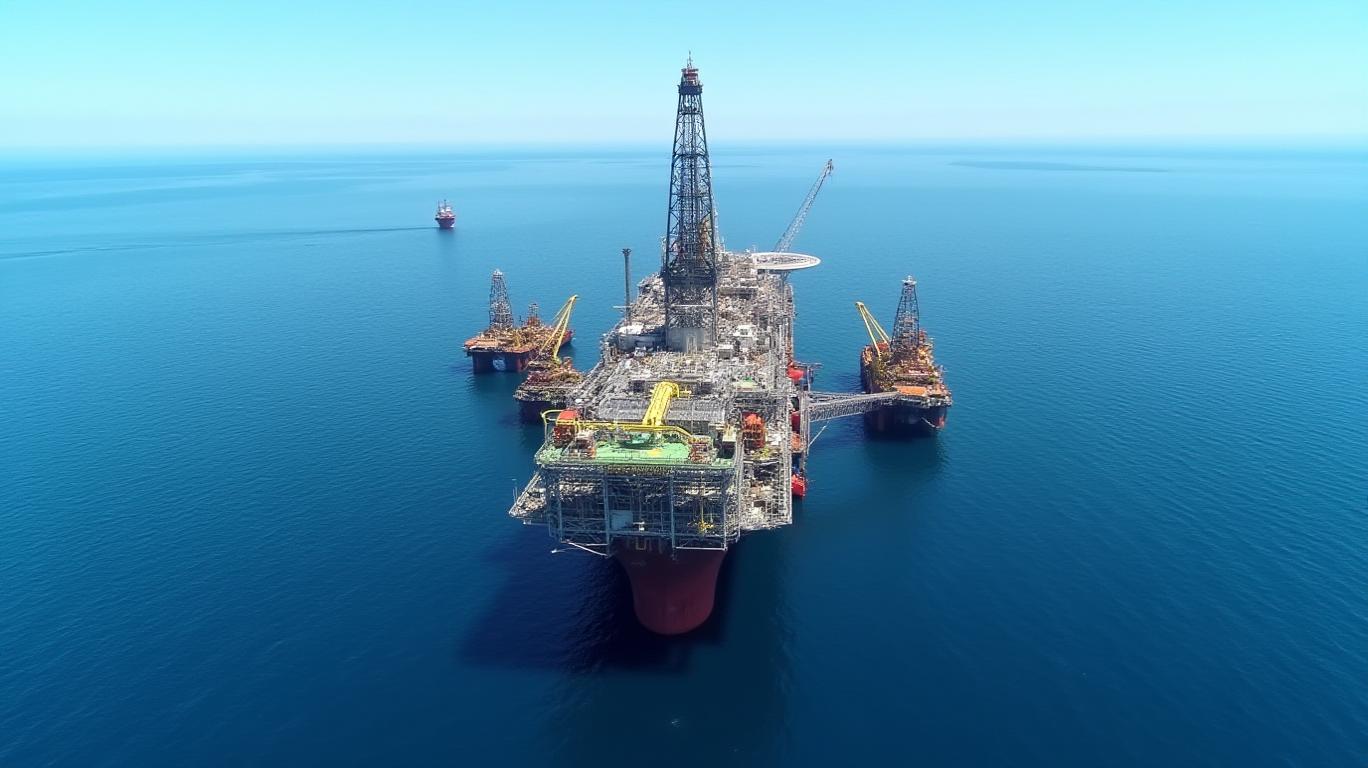Shell's Mero-4 FPSO Launch: A Catalyst for Growth in a Carbon-Constrained World
The launch of Shell's Mero-4 Floating Production Storage and Offloading (FPSO) unit in Brazil's Santos Basin in May 2025 marks a pivotal moment for the oil giant's upstream strategy. With a capacity of 180,000 barrels of oil per day (b/d) and cutting-edge environmental design, this project is not merely an infrastructure milestone—it's a blueprint for how
intends to balance scale, efficiency, and sustainability to drive shareholder value in the 2020s and beyond. For energy investors, the Mero-4 project offers a rare opportunity to capitalize on a high-return, low-carbon oil asset in one of the world's most prolific basins.Scalability: A Cornerstone of Long-Term Growth
The Mero-4 FPSO, named Alexandre de Gusmão, is the fourth such unit commissioned in the Libra Basin since 2022, bringing the Mero field's total production capacity to 770,000 b/d. This scale is critical for Shell's ambition to peak production at over 1 million barrels of oil equivalent per day (boe/d) by 2030—a target it outlined at its 2022 Capital Markets Day. The project's ability to connect 12 wells in water depths of 2,000 meters underscores the consortium's mastery of deepwater extraction, a domain where Brazil's pre-salt reserves are expected to deliver 40% of the country's oil production by 2030.
The scalability of the Libra Consortium's approach is further evidenced by its modular design: each FPSO can be expanded or redeployed as needed. For investors, this flexibility reduces stranded asset risks and positions Shell to capture incremental upside as global demand for liquid fuels stabilizes.

Cost Efficiency: A Competitive Edge in a Low-Growth Era
While oil majors grapple with rising operational costs, the Mero-4 project stands out for its low breakeven price—estimated at under $45/bbl, well below the global average of $55–$60/bbl. This efficiency stems from two factors: first, Brazil's favorable fiscal terms for pre-salt projects, and second, the consortium's ability to leverage economies of scale across five FPSOs and an Early Production System (EPS).
The project's gas reinjection technology also reduces costs by minimizing flaring and avoiding penalties tied to carbon regulations. For Shell, this aligns with its $1 billion annual investment in low-carbon technologies through 2030, which the company claims will lower its operational carbon intensity by 5–6% annually.
ESG Alignment: Tapping into ESG-Focused Capital
The Mero-4 project's environmental claims—zero routine flaring and 12 million cubic meters/day of gas reinjected—are central to its appeal for ESG investors. While critics argue that gas reinjection merely defers emissions, Shell's commitment to the Science-Based Targets initiative (SBTi) provides a framework for accountability. The project's design reduces Scope 1 emissions by 40% compared to traditional offshore operations, a metric that resonates with institutional investors managing over $100 trillion in ESG-linked assets.
Moreover, the consortium's track record in the Libra Basin—where the first three FPSOs have exceeded production targets—bolsters credibility. Petrobras' technical leadership and TotalEnergies' sustainability expertise ensure the project's execution aligns with global climate goals.
Risks: Navigating Volatility and Regulation
No investment is without risk. The Mero-4 project faces two primary headwinds:
- Commodity Price Volatility: While the project's low breakeven price mitigates downside, prolonged oil prices below $50/bbl could strain Shell's free cash flow.
- Regulatory Shifts: Brazil's new left-wing government, led by President Lula, has signaled a harder line on foreign oil firms, including demands for higher royalties and faster production ramp-ups.
However, Shell's 19.3% stake in the Libra Consortium and its partnership with state-owned Petrobras (38.6%) provide political insulation. Meanwhile, the project's $5.5 billion investment—already sunk—creates a powerful incentive for stakeholders to maintain stability.
Conclusion: A Strategic Win for Shell and Investors
The Mero-4 FPSO is more than a single project—it's a template for how oil majors can thrive in the 2020s. By marrying scale, cost discipline, and ESG credibility, Shell is positioning itself to deliver 3–4% annual production growth through 2030, outpacing peers like ExxonMobil (XOM) and Chevron (CVX). For investors, this project is a gateway to a $100 billion opportunity in Brazil's pre-salt reserves, with Shell's equity stake alone potentially unlocking $20 billion in net present value by 2030.
As ESG-focused capital flows surge, the Mero-4 project's alignment with net-zero targets could further amplify Shell's valuation. With the stock trading at 1.2x 2025 EV/EBITDA—a discount to its five-year average—now is the time to act.
Investment Thesis: Buy Shell (SHEL) for exposure to a high-margin, low-carbon oil asset that aligns with both production growth and ESG mandates. Target a 12–18 month price target of $90–$100/share, driven by rising oil prices and project execution.
The Mero-4 FPSO is Shell's future—investors would be wise to board now.

Comments
No comments yet